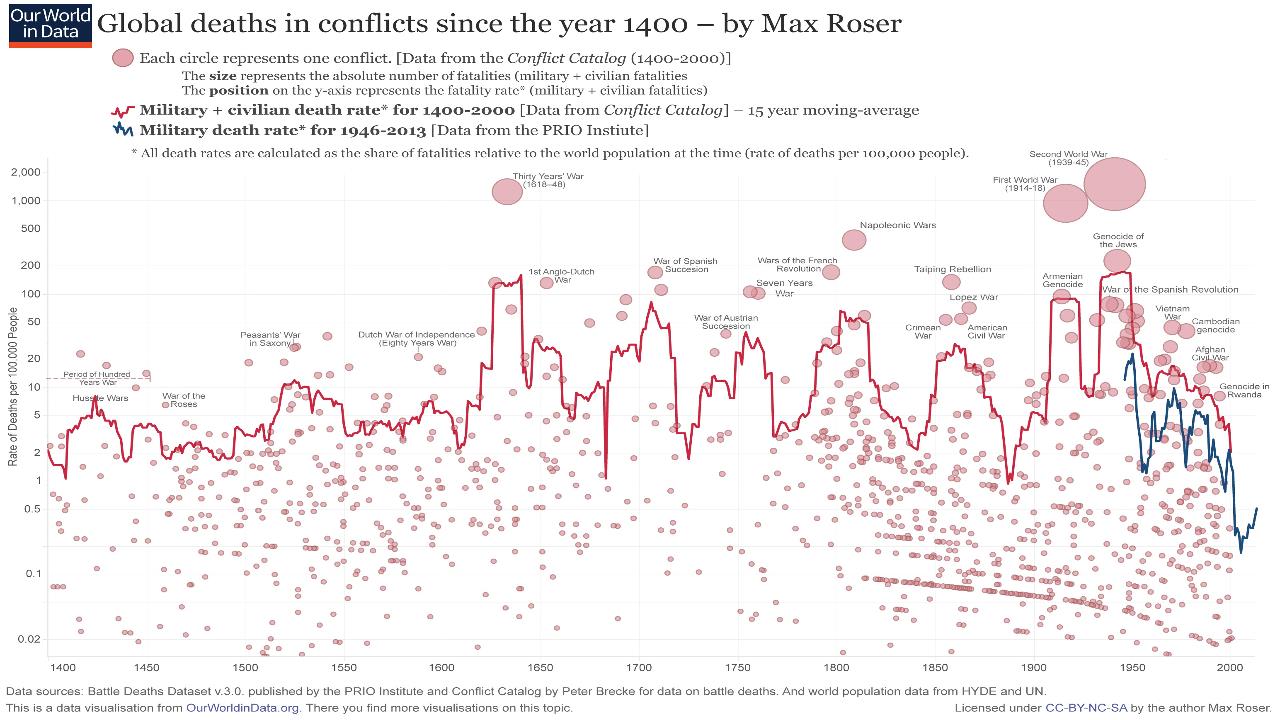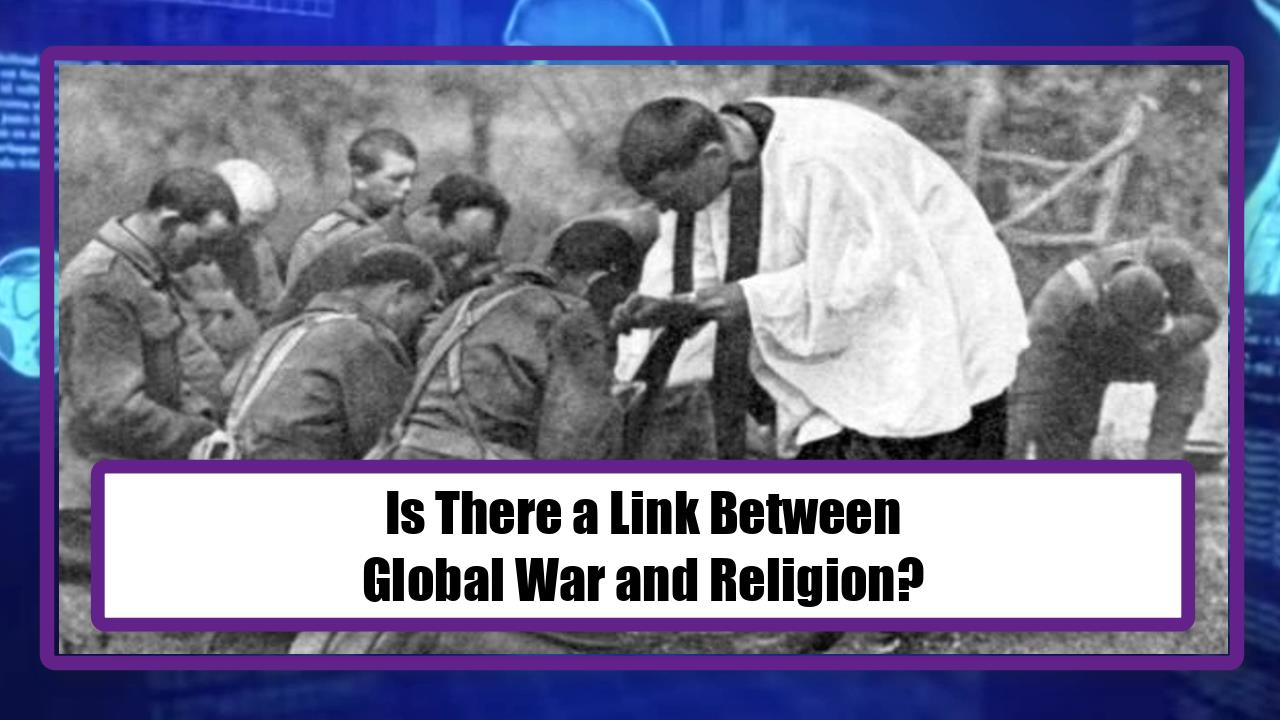Video:
Take our online poll:
AI Analysis:
The incidence of death by war, both military and civilian, has varied significantly over the centuries due to a combination of social, political, technological, and economic factors. Some major factors influencing these changes include:
Technological Advancements: Technological advancements in weaponry and military tactics have had a profound impact on the nature and lethality of warfare. For example, the invention of firearms, artillery, and explosives drastically increased the scale and efficiency of killing in warfare. More recent advancements, such as nuclear weapons and precision-guided munitions, have further transformed the nature of warfare and its potential for catastrophic consequences.
Political Systems and Ideologies: Changes in political systems, ideologies, and geopolitical dynamics have often influenced the frequency and intensity of conflicts. Shifts in power, the rise and fall of empires, ideological conflicts (e.g., religious wars, Cold War), and struggles for independence or self-determination have all played significant roles in shaping patterns of warfare and death by war.
Economic Factors: Economic factors such as resource scarcity, competition for territory, trade routes, and access to valuable resources have historically been major drivers of conflict. Economic disparities, poverty, and inequality within and between societies can also contribute to social unrest and violence.
Social and Cultural Changes: Social and cultural factors, including population growth, urbanization, nationalism, ethnic tensions, and changes in societal norms and values, can influence the propensity for conflict and the willingness of individuals to engage in warfare.
Diplomacy and International Relations: The effectiveness of diplomacy, the presence or absence of international institutions promoting peace and cooperation (such as the United Nations), and the balance of power among nations can all influence the likelihood of conflict and the effectiveness of efforts to prevent or mitigate it.
Globalization: Globalization, including increased interconnectedness, trade, and migration, has both positive and negative implications for conflict. While it can promote cooperation and interdependence between nations, it can also exacerbate tensions and contribute to the spread of conflicts across borders.
Military Strategies and Tactics: Changes in military strategies, tactics, and doctrines, as well as innovations in logistics and transportation, have influenced the conduct and outcomes of wars. Adaptations in response to technological developments, intelligence capabilities, and changes in the nature of warfare (e.g., asymmetric warfare) also shape patterns of death in conflicts.
Public Opinion and Civil Society: Public attitudes towards war, peace movements, advocacy for human rights, and efforts to hold perpetrators of war crimes accountable can influence government policies and the conduct of military operations, thereby affecting the incidence of death in war.
Overall, the interplay of these factors has led to significant fluctuations in the frequency, scale, and impact of death by war over the centuries, with periods of relative peace and stability interspersed with periods of widespread conflict and suffering.
Chart:

References:


Comments